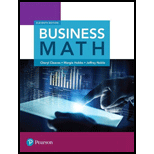
Business Math (11th Edition)
11th Edition
ISBN: 9780134496436
Author: Cheryl Cleaves, Margie Hobbs, Jeffrey Noble
Publisher: PEARSON
expand_more
expand_more
format_list_bulleted
Question
Chapter 1, Problem 2CS3
To determine
To calculate: The amount that will be deducted from each person's monthly paycheck if the amount should be paid within
Expert Solution & Answer
Want to see the full answer?
Check out a sample textbook solution
Students have asked these similar questions
Charity Navigator is America's leading independent charity evaluator. The data in the Excel Online file below show the total expenses ($), the percentage of the total budget spent on administrative expenses, the percentage spent on fundraising, and the percentage spent on program expenses for 10 supersized charities. Administrative expenses include overhead, administrative staff and associated costs, and organizational meetings. Fundraising expenses are what a charity spends to raise money, and program expenses are what the charity spends on the programs and services it exists to deliver. The sum of the three percentages does not add to 100% because of rounding. Construct a spreadsheet to answer the following questions.
Charity #
Charity
Total Expenses ($)
Administrative Expenses (%)
Fundraising Expenses (%)
Program Expenses (%)
1
American Red Cross
3355147520
3.8
3.9
92.1
2
World Vision
1200410940
3.8
7.6
88.4
3
Smithsonian Institution
1078888839
23.3
2.6
73.7
4
Food For…
Corbel Corporation has two divisions: Division A and Division B. Last month, the company reported a contribution margin of $42,900 for Division A. Division B had a contribution margin ratio
of 30% and its sales were $242,000. Net operating income for the company was $31,900 and traceable fixed expenses were $58,700. Corbel Corporation's common fixed expenses were:
Multiple Choice
$24,900
$58,700
$83,600
$115,500
Most advancement professionals can explain why annual fund dollars are important. They provide an important source of flexible and spendable revenue that has an impact on today’s students, faculty, and programs. For most educational institutions, the majority of donors will be alumni—although there are other key donor groups such as parents, students, faculty, staff, and friends
In 2020, alumni collectively donated $11.37 billion to their colleges and universities, according to an annual report from the nonprofit Council for Aid to Education. That is an increase of 14.5 percent from the prior year, which the report attributes, at least in part, to a strong stock market. Some colleges and universities have a particularly high percentage of former students who make financial contributions. In that period, the 10 institutions with the highest percentages of undergraduate alumni donors boasted an average giving rate of 51.5 percent.
Alumni donor count is used to calculate alumni…
Chapter 1 Solutions
Business Math (11th Edition)
Ch. 1.1 - Prob. 1-1SCCh. 1.1 - Prob. 1-2SCCh. 1.1 - Prob. 1-3SCCh. 1.1 - Prob. 1-4SCCh. 1.1 - Prob. 2-1SCCh. 1.1 - Prob. 2-2SCCh. 1.1 - Prob. 2-3SCCh. 1.1 - Prob. 2-4SCCh. 1.1 - Prob. 3-1SCCh. 1.1 - Prob. 3-2SC
Ch. 1.1 - Prob. 3-3SCCh. 1.1 - Prob. 3-4SCCh. 1.1 - Prob. 3-5SCCh. 1.1 - Prob. 3-6SCCh. 1.1 - Prob. 4-1SCCh. 1.1 - Prob. 4-2SCCh. 1.1 - Prob. 4-3SCCh. 1.1 - Prob. 4-4SCCh. 1.1 - Prob. 1SECh. 1.1 - Prob. 2SECh. 1.1 - Prob. 3SECh. 1.1 - Prob. 4SECh. 1.1 - Prob. 5SECh. 1.1 - Prob. 6SECh. 1.1 - Prob. 7SECh. 1.1 - Prob. 8SECh. 1.1 - Prob. 9SECh. 1.1 - Prob. 10SECh. 1.1 - Prob. 11SECh. 1.1 - Prob. 12SECh. 1.1 - Prob. 13SECh. 1.1 - Prob. 14SECh. 1.1 - Prob. 15SECh. 1.1 - Prob. 16SECh. 1.1 - Prob. 17SECh. 1.1 - Prob. 18SECh. 1.1 - Prob. 19SECh. 1.1 - Prob. 20SECh. 1.1 - Prob. 21SECh. 1.1 - Prob. 22SECh. 1.1 - Prob. 23SECh. 1.1 - Prob. 24SECh. 1.1 - Prob. 25SECh. 1.1 - Prob. 26SECh. 1.2 - Prob. 1-1SCCh. 1.2 - Prob. 1-2SCCh. 1.2 - Prob. 1-3SCCh. 1.2 - Prob. 1-4SCCh. 1.2 - Prob. 1-5SCCh. 1.2 - Prob. 1-6SCCh. 1.2 - Prob. 1-7SCCh. 1.2 - Prob. 1-8SCCh. 1.2 - Prob. 1-9SCCh. 1.2 - Prob. 1-10SCCh. 1.2 - Prob. 1-11SCCh. 1.2 - Prob. 1-12SCCh. 1.2 - Prob. 2-1SCCh. 1.2 - Prob. 2-2SCCh. 1.2 - Prob. 2-3SCCh. 1.2 - Prob. 2-4SCCh. 1.2 - Prob. 2-5SCCh. 1.2 - Prob. 2-6SCCh. 1.2 - Prob. 3-1SCCh. 1.2 - Prob. 3-2SCCh. 1.2 - Prob. 3-3SCCh. 1.2 - Prob. 3-4SCCh. 1.2 - Prob. 3-5SCCh. 1.2 - Prob. 3-6SCCh. 1.2 - Prob. 3-7SCCh. 1.2 - Prob. 3-8SCCh. 1.2 - Prob. 3-9SCCh. 1.2 - Prob. 3-10SCCh. 1.2 - Prob. 4-1SCCh. 1.2 - Prob. 4-2SCCh. 1.2 - Prob. 4-3SCCh. 1.2 - Prob. 4-4SCCh. 1.2 - Prob. 4-5SCCh. 1.2 - Prob. 4-6SCCh. 1.2 - Prob. 4-7SCCh. 1.2 - Prob. 4-8SCCh. 1.2 - Prob. 4-9SCCh. 1.2 - Prob. 4-10SCCh. 1.2 - Prob. 5-1SCCh. 1.2 - Prob. 5-2SCCh. 1.2 - Prob. 5-3SCCh. 1.2 - Prob. 5-4SCCh. 1.2 - Prob. 1SECh. 1.2 - Prob. 2SECh. 1.2 - Prob. 3SECh. 1.2 - Prob. 4SECh. 1.2 - Prob. 5SECh. 1.2 - Prob. 6SECh. 1.2 - Prob. 7SECh. 1.2 - Prob. 8SECh. 1.2 - Prob. 9SECh. 1.2 - Prob. 10SECh. 1.2 - Prob. 11SECh. 1.2 - Prob. 12SECh. 1.2 - Prob. 13SECh. 1.2 - Prob. 14SECh. 1.2 - Prob. 15SECh. 1.2 - Prob. 16SECh. 1.2 - Prob. 17SECh. 1.2 - Prob. 18SECh. 1.2 - Prob. 19SECh. 1.2 - Prob. 20SECh. 1.2 - Prob. 21SECh. 1.2 - Prob. 22SECh. 1.2 - Prob. 23SECh. 1.2 - Prob. 24SECh. 1.2 - Prob. 25SECh. 1.2 - Prob. 26SECh. 1.2 - Prob. 27SECh. 1.2 - Prob. 28SECh. 1.2 - Prob. 29SECh. 1.2 - Prob. 30SECh. 1.2 - Prob. 31SECh. 1.2 - Prob. 32SECh. 1.2 - Prob. 33SECh. 1.2 - Prob. 34SECh. 1.2 - Prob. 35SECh. 1.2 - Prob. 36SECh. 1.2 - Prob. 37SECh. 1.2 - Prob. 38SECh. 1.2 - Prob. 39SECh. 1.2 - Prob. 40SECh. 1.2 - Prob. 41SECh. 1.2 - Prob. 42SECh. 1.2 - Prob. 43SECh. 1.2 - Prob. 44SECh. 1.2 - Prob. 45SECh. 1.2 - Prob. 46SECh. 1.2 - Prob. 47SECh. 1.2 - Prob. 48SECh. 1.2 - Prob. 49SECh. 1.2 - Prob. 50SECh. 1.2 - Prob. 51SECh. 1.2 - Prob. 52SECh. 1.2 - Prob. 53SECh. 1.2 - Prob. 54SECh. 1.2 - Prob. 55SECh. 1.2 - Prob. 56SECh. 1 - Prob. 1ESCh. 1 - Prob. 2ESCh. 1 - Prob. 3ESCh. 1 - Prob. 4ESCh. 1 - Prob. 5ESCh. 1 - Prob. 6ESCh. 1 - Prob. 7ESCh. 1 - Prob. 8ESCh. 1 - Prob. 9ESCh. 1 - Prob. 10ESCh. 1 - Prob. 11ESCh. 1 - Prob. 12ESCh. 1 - Prob. 13ESCh. 1 - Prob. 14ESCh. 1 - Prob. 15ESCh. 1 - Prob. 16ESCh. 1 - Prob. 17ESCh. 1 - Prob. 18ESCh. 1 - Prob. 19ESCh. 1 - Prob. 20ESCh. 1 - Prob. 21ESCh. 1 - Prob. 22ESCh. 1 - Prob. 23ESCh. 1 - Prob. 24ESCh. 1 - Prob. 25ESCh. 1 - Prob. 26ESCh. 1 - Prob. 27ESCh. 1 - Prob. 28ESCh. 1 - Prob. 29ESCh. 1 - Prob. 30ESCh. 1 - Prob. 31ESCh. 1 - Prob. 32ESCh. 1 - Prob. 33ESCh. 1 - Prob. 34ESCh. 1 - Prob. 35ESCh. 1 - Prob. 36ESCh. 1 - Prob. 37ESCh. 1 - Prob. 38ESCh. 1 - Prob. 39ESCh. 1 - Prob. 40ESCh. 1 - Prob. 41ESCh. 1 - Prob. 42ESCh. 1 - Prob. 43ESCh. 1 - Prob. 44ESCh. 1 - Prob. 45ESCh. 1 - Prob. 46ESCh. 1 - Prob. 47ESCh. 1 - Prob. 48ESCh. 1 - Prob. 49ESCh. 1 - Prob. 50ESCh. 1 - Prob. 51ESCh. 1 - Prob. 52ESCh. 1 - Prob. 53ESCh. 1 - Prob. 54ESCh. 1 - Prob. 55ESCh. 1 - Prob. 56ESCh. 1 - Prob. 57ESCh. 1 - Prob. 58ESCh. 1 - Prob. 59ESCh. 1 - Prob. 60ESCh. 1 - Prob. 61ESCh. 1 - Prob. 62ESCh. 1 - Prob. 63ESCh. 1 - Prob. 64ESCh. 1 - Prob. 65ESCh. 1 - Prob. 66ESCh. 1 - Prob. 67ESCh. 1 - Prob. 68ESCh. 1 - Prob. 69ESCh. 1 - Prob. 70ESCh. 1 - Prob. 71ESCh. 1 - Prob. 72ESCh. 1 - Prob. 73ESCh. 1 - Prob. 74ESCh. 1 - Prob. 75ESCh. 1 - Prob. 76ESCh. 1 - Prob. 77ESCh. 1 - Prob. 78ESCh. 1 - Prob. 79ESCh. 1 - Prob. 80ESCh. 1 - Prob. 81ESCh. 1 - Prob. 82ESCh. 1 - Prob. 83ESCh. 1 - Prob. 84ESCh. 1 - Prob. 85ESCh. 1 - Prob. 86ESCh. 1 - Prob. 87ESCh. 1 - Prob. 88ESCh. 1 - Prob. 89ESCh. 1 - Prob. 1PTCh. 1 - Prob. 2PTCh. 1 - Prob. 3PTCh. 1 - Prob. 4PTCh. 1 - Prob. 5PTCh. 1 - Prob. 6PTCh. 1 - Prob. 7PTCh. 1 - Prob. 8PTCh. 1 - Prob. 9PTCh. 1 - Prob. 10PTCh. 1 - Prob. 11PTCh. 1 - Prob. 12PTCh. 1 - Prob. 13PTCh. 1 - Prob. 14PTCh. 1 - Prob. 15PTCh. 1 - Prob. 16PTCh. 1 - Prob. 17PTCh. 1 - Prob. 18PTCh. 1 - Prob. 19PTCh. 1 - Prob. 20PTCh. 1 - Prob. 21PTCh. 1 - Prob. 22PTCh. 1 - Prob. 23PTCh. 1 - Prob. 24PTCh. 1 - Prob. 25PTCh. 1 - Prob. 26PTCh. 1 - Prob. 27PTCh. 1 - Prob. 28PTCh. 1 - Prob. 29PTCh. 1 - Prob. 30PTCh. 1 - Prob. 31PTCh. 1 - Prob. 32PTCh. 1 - Prob. 1CTCh. 1 - Prob. 2CTCh. 1 - Prob. 3CTCh. 1 - Prob. 4CTCh. 1 - Prob. 5CTCh. 1 - Prob. 6CTCh. 1 - Prob. 7CTCh. 1 - Prob. 8CTCh. 1 - Prob. 9CTCh. 1 - Prob. 10CTCh. 1 - Prob. 11CTCh. 1 - Prob. 12CTCh. 1 - Prob. 1CPCh. 1 - Prob. 2CPCh. 1 - Prob. 1CS1Ch. 1 - Prob. 2CS1Ch. 1 - Prob. 3CS1Ch. 1 - Prob. 1CS2Ch. 1 - Prob. 2CS2Ch. 1 - Prob. 3CS2Ch. 1 - Prob. 1CS3Ch. 1 - Prob. 2CS3Ch. 1 - Prob. 3CS3Ch. 1 - Prob. 4CS3Ch. 1 - Prob. 5CS3
Knowledge Booster
Learn more about
Need a deep-dive on the concept behind this application? Look no further. Learn more about this topic, subject and related others by exploring similar questions and additional content below.Similar questions
- The Nine Roses Restaurant, in New Orleans, is owned and operated by Lana and Jeffrey Lee. The restaurant just completed its third year of operations. Since opening Nine Roses, the Lees have sought to establish a reputation for the restaurant as a high-quality dining establishment that specializes in fresh seafood. Through the efforts of Lana and Jeffrey as well as their staff, Nine Roses has become one of the best and fastest growing restaurants in New Orleans. To better plan for future growth of the restaurant, Lana and Jeffrey needs to develop a system that will enable them to forecast food and beverage sales by month for up to one year in advance. The file “Nine Roses” shows the value of food and beverage sales ($1000s) for the first three years of operation. A time series plot. Comment on the underlying pattern in the time series. An analysis of the seasonality of the data. Indicate the seasonal indices for each month, and comment on the high and low seasonal sales months. Do…arrow_forwardThe River is a literary magazine published by the English Department at Tech. It has a 70-year history and enjoys an excellent reputation for providing a literary outlet for aspiring Appalachian writers in particular. However, its sales, mostly through independent bookstores and college libraries, have never been very large. Several years ago, the magazine’s advisory board decided to create a Web site and post the bi-monthly issues online for free access. Due to poor economic conditions and state budget cuts, Tech recently withdrew funding for the magazine, and in order to make up for this financial loss, the magazine’s staff has decided to try to sell advertising (especially to local and regional businesses) on the magazine’s Web site. In order to sell advertising, the magazine’s staff would like to be able to provide potential advertisers with a forecast of the number of “visits” the Web site might receive in future months. Following is the number of monthly visits the Web site has…arrow_forwardGiovanni Food Products produces and sells frozen pizzas to public schools throughout the eastern United States. Using a very aggressive marketing strategy they have been able to increase their annual revenue by approximately $10 million over the past 10 years. But increased competition has slowed their growth rate in the past few years. The annual revenue, in millions of dollars, for the previous 10 years is contained in the Excel Online file below. Construct a spreadsheet to answer the following questions.arrow_forward
- Darden Restaurants, Inc. (DRI) is the largest full-service restaurant company in the world. It operates over 2,200 restaurants under a variety of brand names, including Olive Garden, Bahama Breeze, and LongHorn Steakhouse. Panera Bread Company (PNRA) operates over 1,800 bakery-café locations across North America. It is one of the largest food service companies in the United States. The cost of food, beverage, and packaging and the beginning and ending inventory balances from recent annual reports for Darden and Panera are as follows (in millions): Darden Panera Cost of goods sold (food, beverage, and packaging) $2,039.7 $715.5 Inventories: Beginning of year 163.9 22.8 End of year 175.4 22.5 a. Compute the inventory turnover for both companies. Round all calculations to one decimal place. Inventory Turnover Darden Restaurants fill in the blank 1 Panera Bread fill in the blank 2 b. Compute the number of days’ sales in…arrow_forwardIf a household has 3 members, and has an annual income of $100,000, predict this household’s monthly spending.arrow_forwardDave Fletcher, the general manager of North Carolina Engineering Corporation (NCEC), thinks that his firm’s engineer-ing services contracted to highway construction firms are directly related to the volume of highway construction business contractedwith companies in his geographic area. He wonders if this is reallyso, and if it is, can this information help him plan his operationsbetter by forecasting the quantity of his engineering servicesrequired by construction firms in each quarter of the year? Thefollowing table presents the sales of his services and total amountsof contracts for highway construction over the past eight quarters: a) Using this data, develop a regression equation for predictingthe level of demand of NCEC’s services. b) Determine the coefficient of correlation and the standard errorof the estimate.arrow_forward
- The production level needed from the agricultural sector, the manufacturing sector, and the energy sector is ..... ....... ....... units.arrow_forwardUniversity researchers published a working paper. One of the objectives of the study was to determine whether ride-share drivers actually make a profit.arrow_forwardAirbus A330 - 300s seats 330 passengers and cost $250 million each, Boeing 767 - 300ERs seat 270 passengers and cost $200 million each, while Boeing Dreamliner 787 - 9s seat 240 passengers and cost $250 million each. You are the purchasing manager of an airline company and have a spending goal of $5650 million for the purchase of new aircraft to seat a total of 6690 passengers. Your company has a policy of supporting U.S. industries, and you have been instructed to buy twice as many Boeings as Airbuses. Given the selection of three aircraft, how many of each should you order? Airbus A330 - 300s Boeing 767 - 300ERs Boeing Dreamliner 787- 9sarrow_forward
- The Vintage Restaurant, on Captiva Island near Fort Myers, Florida, is owned and operated by Karen Payne. The restaurant just completed its third year of operation. Since opening her restaurant, Karen has sought to establish a reputation for the Vintage as a high-quality dining establishment that specializes in fresh seafood. Through the efforts of Karen and her staff, her restaurant has become one of the best and fastest growing restaurants on the island. To better plan for future growth of the restaurant, Karen needs to develop a system that will enable her to forecast food and beverage sales by month for up to one year in advance. Table 17.25 shows the value of food and beverage sales ($1000s) for the first three years of operation. Dependent variable: What is the variable: ___________________________________________ How it is measured, i.e. what units or categories are used (e.g., revenue measured in “dollars”; height measured as “short, average, tall”)…arrow_forwardThe Vintage Restaurant, on Captiva Island near Fort Myers, Florida, is owned and operated by Karen Payne. The restaurant just completed its third year of operation. Since opening her restaurant, Karen has sought to establish a reputation for the Vintage as a high-quality dining establishment that specializes in fresh seafood. Through the efforts of Karen and her staff, her restaurant has become one of the best and fastest growing restaurants on the island. To better plan for future growth of the restaurant, Karen needs to develop a system that will enable her to forecast food and beverage sales by month for up to one year in advance. The table below shows the value of food and beverage sales ($1000s) for the first three years of operation. Independent variable: What is the variable: ___________________________________________ How it is measured, i.e. what units or categories are used (e.g., revenue measured in “dollars”; height measured as “short, average, tall”)…arrow_forwardThe Vintage Restaurant, on Captiva Island near Fort Myers, Florida, is owned and operated by Karen Payne. The restaurant just completed its third year of operation. Since opening her restaurant, Karen has sought to establish a reputation for the Vintage as a high-quality dining establishment that specializes in fresh seafood. Through the efforts of Karen and her staff, her restaurant has become one of the best and fastest growing restaurants on the island. To better plan for future growth of the restaurant, Karen needs to develop a system that will enable her to forecast food and beverage sales by month for up to one year in advance. Table 17.25 shows the value of food and beverage sales ($1000s) for the first three years of operation. Managerial Report Perform an analysis of the sales data for the Vintage Restaurant. Prepare a report for Karen that summarizes your findings, forecasts, and recommendations. Include the following: A time series plot. Comment on the underlying pattern…arrow_forward
arrow_back_ios
SEE MORE QUESTIONS
arrow_forward_ios
Recommended textbooks for you
 Discrete Mathematics and Its Applications ( 8th I...MathISBN:9781259676512Author:Kenneth H RosenPublisher:McGraw-Hill Education
Discrete Mathematics and Its Applications ( 8th I...MathISBN:9781259676512Author:Kenneth H RosenPublisher:McGraw-Hill Education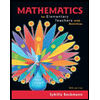 Mathematics for Elementary Teachers with Activiti...MathISBN:9780134392790Author:Beckmann, SybillaPublisher:PEARSON
Mathematics for Elementary Teachers with Activiti...MathISBN:9780134392790Author:Beckmann, SybillaPublisher:PEARSON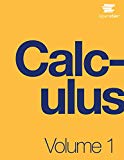
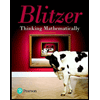 Thinking Mathematically (7th Edition)MathISBN:9780134683713Author:Robert F. BlitzerPublisher:PEARSON
Thinking Mathematically (7th Edition)MathISBN:9780134683713Author:Robert F. BlitzerPublisher:PEARSON Discrete Mathematics With ApplicationsMathISBN:9781337694193Author:EPP, Susanna S.Publisher:Cengage Learning,
Discrete Mathematics With ApplicationsMathISBN:9781337694193Author:EPP, Susanna S.Publisher:Cengage Learning,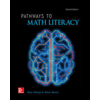 Pathways To Math Literacy (looseleaf)MathISBN:9781259985607Author:David Sobecki Professor, Brian A. MercerPublisher:McGraw-Hill Education
Pathways To Math Literacy (looseleaf)MathISBN:9781259985607Author:David Sobecki Professor, Brian A. MercerPublisher:McGraw-Hill Education

Discrete Mathematics and Its Applications ( 8th I...
Math
ISBN:9781259676512
Author:Kenneth H Rosen
Publisher:McGraw-Hill Education

Mathematics for Elementary Teachers with Activiti...
Math
ISBN:9780134392790
Author:Beckmann, Sybilla
Publisher:PEARSON


Thinking Mathematically (7th Edition)
Math
ISBN:9780134683713
Author:Robert F. Blitzer
Publisher:PEARSON

Discrete Mathematics With Applications
Math
ISBN:9781337694193
Author:EPP, Susanna S.
Publisher:Cengage Learning,

Pathways To Math Literacy (looseleaf)
Math
ISBN:9781259985607
Author:David Sobecki Professor, Brian A. Mercer
Publisher:McGraw-Hill Education
Solve ANY Optimization Problem in 5 Steps w/ Examples. What are they and How do you solve them?; Author: Ace Tutors;https://www.youtube.com/watch?v=BfOSKc_sncg;License: Standard YouTube License, CC-BY
Types of solution in LPP|Basic|Multiple solution|Unbounded|Infeasible|GTU|Special case of LP problem; Author: Mechanical Engineering Management;https://www.youtube.com/watch?v=F-D2WICq8Sk;License: Standard YouTube License, CC-BY
Optimization Problems in Calculus; Author: Professor Dave Explains;https://www.youtube.com/watch?v=q1U6AmIa_uQ;License: Standard YouTube License, CC-BY
Introduction to Optimization; Author: Math with Dr. Claire;https://www.youtube.com/watch?v=YLzgYm2tN8E;License: Standard YouTube License, CC-BY